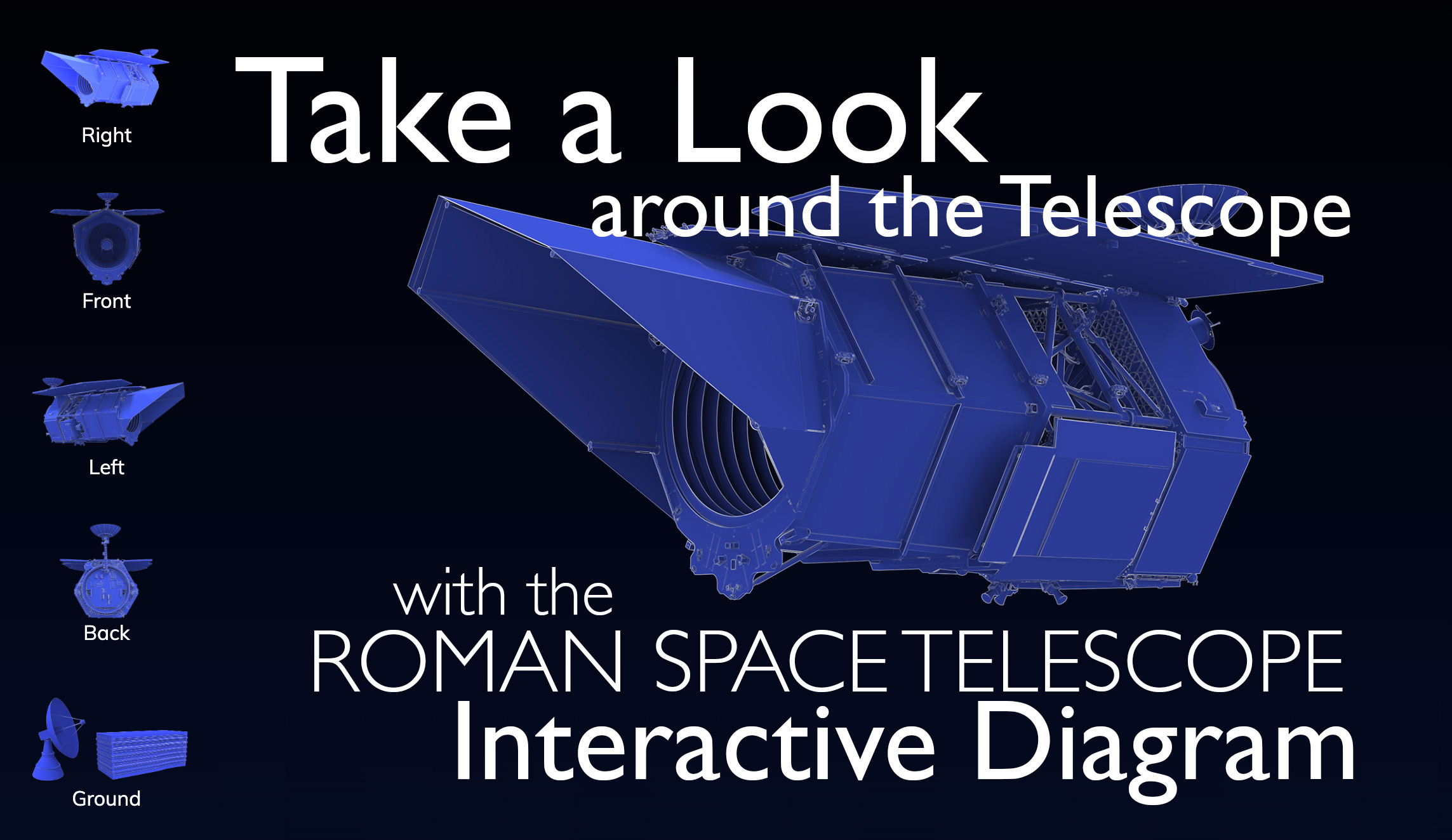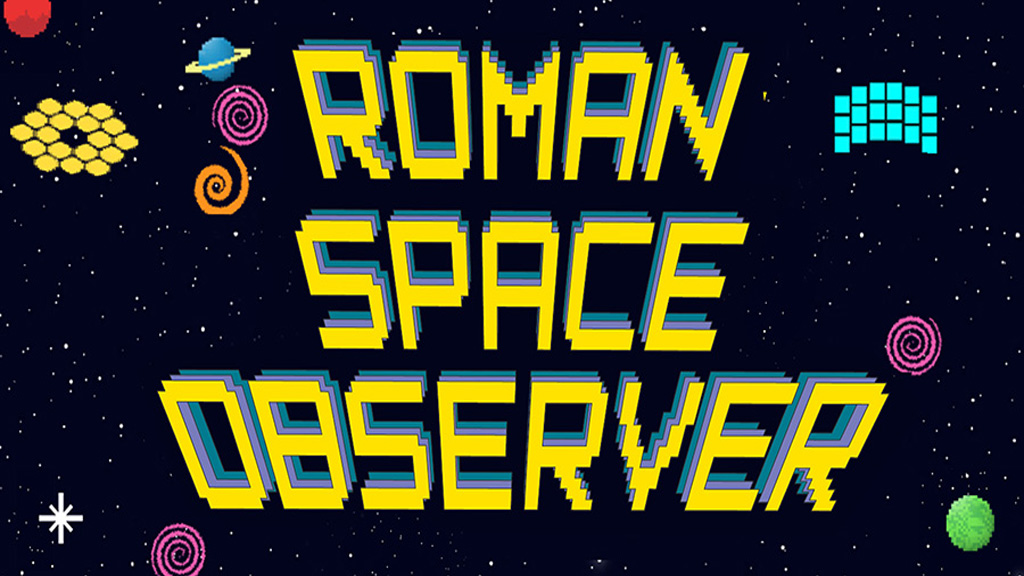Project Infrastructure Teams
Cosmology with the Roman High Latitude Imaging Survey
The Roman Galactic Exoplanet Survey Project Infrastructure Team
RAPID: Roman Alerts Promptly from Image Differencing
A Roman Project Infrastructure Team to Support Cosmological Measurements with Type Ia Supernovae
Project Infrastructure for the Roman Galaxy Redshift Survey
Maximizing Cosmological Science with the Roman High Latitude Imaging Survey
Olivier Doré / Jet Propulsion Laboratory, PI
The most surprising cosmological discovery of the last decades has been the demonstration that the expansion of the universe is accelerating rather than decelerating. We have since measured the cosmic expansion history by multiple methods with much greater precision over a wide range of redshift, but understanding the origin of cosmic acceleration remains one of the most pressing unsolved problems in fundamental physics.
Alongside the expansion history, one can probe the physics of cosmic acceleration by measuring the growth of matter clustering from primordial fluctuations measured in the cosmic microwave background (CMB) to low redshift structure measured through weak gravitational lensing or redshift-space distortions of the galaxy distribution.
Measurements of structure growth are especially important for distinguishing theories that explain cosmic acceleration with an exotic energy component (a cosmological constant or more general “dark energy”) from theories that modify general relativity itself.
The Nancy Grace Roman Space Telescope (hereafter Roman) will be one of the most powerful facilities for weak lensing cosmology ever built; compared to the Vera C. Rubin Observatory’s Legacy Survey of Space and Time (hereafter LSST), Roman measures a similar number of galaxy shapes per unit observing time with the high angular resolution and stability afforded by space-based observations. Forecasts imply that cosmological weak lensing in a 2000 square degree high-latitude imaging survey (HLIS) with Roman could lead to an order of magnitude improvement in precision over current measurements. Cross-correlations with galaxies and the masses and abundance of galaxy clusters will provide valuable additional cosmological information. To realize Roman’s cosmological goals, it is critical to control sources of systematic uncertainty and extract information from small scales and non-Gaussian statistics that are enabled by the gains in redshift coverage, galaxy number density and the quality of space based imaging with Roman. These measurements have the potential to revolutionize our understanding of cosmology, gravity, and fundamental physics.
We propose a program of infrastructure development that will enable the Roman high-latitude imaging survey to achieve its extraordinary cosmological potential, while simultaneously providing unprecedented volumes of exquisite data for an enormous range of astrophysical investigations. We have structured this proposal tightly around a list of deliverables, grouped under the broad categories of survey strategy, weak lensing measurements, cosmological inference, and community engagement. Our team is composed of leading experts on these topics, many of whom have been heavily involved with the Roman mission for a decade or more. The infrastructure proposed here will build heavily on the work that we have done over the past six years as members of the Science Investigation Team for cosmology with the HLIS. We look forward to working with the mission team and with scientists from the Science Operations Center (SOC), the Roman community, and the astronomy and cosmology community at large. Our program will build the infrastructure required to meet the relevant Roman cosmological science goals and will lay the foundations for future powerful joint analysis between Roman and other cosmological surveys such as DESI, Rubin, Euclid, SO and CMB-S4, which will greatly enhance the scientific impact of the Roman HLIS.
The Roman Galactic Exoplanet Survey Project Infrastructure Team
B. Scott Gaudi / Ohio State University, PI
The primary science driver for the Galactic Bulge Time Domain Survey (GBTBS) of the Nancy Grace Roman Space Telescope (Roman) is the requirement to obtain a statistical census of cold planets orbiting stars in the Galactic disk and bulge using the gravitational microlensing method. We refer to this as the Roman Galactic Exoplanet Survey (RGES). This science is at least as compelling as when Roman was selected by the 2010 Decadal Survey. The 2020 Decadal Survey states that Roman is “the only platform in the coming decades that can produce a statistical census of planetary occurrence as a function of orbital separation and mass, from terrestrials to gas giants, beyond 1 AU”.
We propose to develop the infrastructure required to plan, execute, and extract cold exoplanet demographics from the RGES survey. Specifically, we will (1) confirm and/or reconfirm the five level-1 RGES science requirements, (2) improve the microlensing event rate and yield calculations by improving the input Galactic models, incorporating new measurements of the near-infrared event rate obtained by the PRime-focus Infrared Microlensing Experimen (PRIME) survey, (3) develop and test the prototype photometry and astrometry pipeline, event detection pipeline, light curve modeling pipeline, and detection efficiency (or completeness) pipeline, which we will make publicly-available and user-friendly, (4) develop the occurrence rate formalism and methodology. In order to test and refine the photometry and astrometry pipeline, we will develop detailed image simulations that reproduce, as faithfully as possible, the actual images obtained by the Roman Wide Field Instrument.
The number of US scientists working in the exoplanet microlensing field is usually small, and the microlensing method is considered to be obscure by many scientists in the exoplanet field. In order to overcome this shortage of exoplanet microlensing experts, the Roman Project and the Science Support Center (SSC) have committed to produce an unusually large set of high level data products to enable newcomers to the field to work productively with the data. We will work very closely with the Roman Science Centers, the Roman Project team and the Community Science Collaborations relevant to the GBTDS to develop and test these data products. We will make our photometry, astrometry and event modeling software publicly available and user-friendly to enable broad participation in RGES science. The same is true for our exoplanet yield simulation tools, and this will enable those interested in doing science with the GBTDS to assess how the survey parameters affect their science yield, as well as that of the RGES.
Finally, we will develop a comprehensive plan that will not only seek to establish a culture of inclusiveness, diversity, and equity in the RGES Project Infrastructure Team and the larger microlensing community as a whole, but also include and train early career researchers from other disciplines to exploit the cutting-edge science enabled by the RGES. While the small size of the US exoplanet microlensing community is a challenge for RGES science, it offers an unusual opportunity to help develop a more inclusive astronomical community. We propose to establish a new undergraduate, graduate, and postdoc inclusion program through Howard University to attract promising young scientists from underrepresented backgrounds without significant microlensing experience to study the exoplanet microlensing method with the RGES team. This would prepare them to take leading roles in the analysis of Roman’s exoplanet microlensing data once those data become available.
RAPID: Roman Alerts Promptly from Image Differencing
Mansi Kasliwal / California Institute of Technology, PI
The 2020 Decadal Survey identified time-domain and multi-messenger science as a high priority this decade. We propose a Project Infrastructure Team to enable a wide suite of dynamic sky science for the Nancy Grace Roman Space Telescope. Our goal is to provide four services:
1. Rapid image-differencing of every new Roman image from a reference image
2. Prompt public alert stream of all transient and variable candidates in the Roman difference images
3. Source match-files recording candidate photometry for every Roman source observed more than once in the same filter
4. Forced-photometry service to investigate precise photometric history at any location by drilling into all available Roman data.
The proposing team has extensive prior experience in building similar services for dedicated time-domain surveys. By promptly delivering a reliable alert stream, the transient and variable communities will be able to undertake timely panchromatic follow-up of the most interesting Roman discoveries. It is essential to provide full history and context to alerts in order to correctly identify high-value transients, and properly allocate follow-up resources, especially spectrographs.
Much of the proposed infrastructure will leverage previous work on other projects. We plan to broadcast the public alert stream in the same format as pioneered by the Zwicky Transient Facility. This format has recently been adopted
Development work will be required to adapt and tune our methods to Roman. We will use simulated Roman images to develop and test our pipeline before launch. We will solve image differencing to tackle the undersampled PSF and lack of a fixed reference grid in the Roman data. We will also develop machine learning for robust candidate identification. We have discussed this plan with colleagues at STSCI to understand how the initial input to this pipeline will come from MAST and how the final output of this pipeline will be returned to MAST for alert archiving.
A Roman Project Infrastructure Team to Support Cosmological Measurements with Type Ia Supernovae
Dan Scolnic / Duke University, Co-PI
Rebekah Hounsell / University of Maryland – Baltimore County, Co-PI
Benjamin Rose / Benjamin Rose / Baylor University, Co-PI
David Rubin / University of Hawaii – Honolulu, Co-PI
The Nancy Grace Roman Space Telescope (Roman) is NASA’s next large flagship mission due for launch no later than May 2027. This mission will conduct a generation-defining experiment in time-domain astronomy, with a focus on Type Ia supernovae (SNe Ia). The core community survey planned for Roman which focuses on collecting data for SNe Ia is the High Latitude Time Domain survey. A key goal of this survey is to use the SN Ia data collected to measure the accelerated expansion of the universe and so better constrain the nature of dark energy. As such Type Ia SNe are highlighted in the NASA Roman ROSES call as one of the main cosmological probes.
In this Project Infrastructure Team (PIT) proposal, we present a pixels-to-cosmology plan that will satisfy the requirements for cosmological experiments with SNe Ia. As part of this work, a transient discovery and photometry/spectroscopy pipeline will be created, enabling a wide range of science that can be utilized by any Wide Field Science (WFS) group in addition to the broader Roman community.
In this proposal, we provide a list of deliverables that will ensure the completion of the Roman science requirements and goals regarding Type Ia SNe, as outlined in Section 3.4 of the ROSES call. These deliverables include fully developed pipelines for photometry and calibration products at the pixel level, the extraction of light curves and prism spectra, the creation of data products including transient alert streams and precision scene-modeling photometry catalogs, the creation of software to model SNe Ia information for standardization, and a survey optimization code that can be enmeshed with other teams as part of a broader community product. We will focus on robust software pipelines including emphasis on open development, validation, documentation and ease for the broader Roman community. Furthermore, we include the top industry-standard project-management tools for both internal organization and external liaising with the Roman Project, and emphasize for all our deliverables a series of validation techniques and code/data releases, in addition to documentation for the broader community.
As our focus for this PIT is on infrastructure pipelines to support SN Ia cosmology, we outline what will be done by our team and how that ties to the work of the Science Centers, WFS teams, and the broader community. Our focus will be on a modular software infrastructure that other groups can utilize, be that on the latest ground-based discoveries or theoretical expectations. This work is oriented towards the stringent requirements of SNe Ia cosmology, but our work here can be leveraged to study a wide range of other classes of transients like strongly lensed supernovae, kilonovae, and other fast transients.
As part of the proposal, we present a plan for engagement with the two Science Centers and with the broader community in a series of workshops, data challenges, and regular updates. We also present a Diversity-Equity-and-Inclusion plan that establishes relationships with nearby universities with large populations of underrepresented minorities. We will use this plan to establish a pathway in astronomy for these individuals, running from the undergraduate level to PhD, all while leveraging the long-term baseline of the Roman mission.
Project Infrastructure for the Roman Galaxy Redshift Survey
Yun Wang / California Institute of Technology, PI
The observed cosmic acceleration remains a mystery twenty-five years after its discovery. Illuminating its unknown cause, “Dark Energy”, is of fundamental importance in cosmology, and one of the science objectives of the Nancy Grace Roman Space Telescope. The Galaxy Redshift Survey (GRS), a powerful cosmological probe, is one of the three observational probes of dark energy on Roman. We propose to be the Project Infrastructure Team (PIT) for the Roman GRS (a survey to be defined in an open community process). We will develop and maintain the infrastructure tools and capabilities needed to address the mission objectives for the Roman GRS and to support Community Science Collaborations. We plan to work closely with the Roman Project, and partner with the Science Centers, providing all necessary support to ensure mission success.
Our program will have 15 deliverables, which require the execution of 13 tasks. These are designed to simulate the data, model and optimize the observing program, model systematic errors and develop methods to mitigate them, and measure compressed statistics including the 2-point correlation function and power spectrum, as well as higher-order statistics uniquely enabled by Roman GRS’s high galaxy number density. Our deliverables include simulated and value-added galaxy catalogs, covariance matrices, and a set of ready-to-apply models calculated using different cutting-edge approaches. Our infrastructure work will enable robust measurements of Baryon Acoustic Oscillations (BAO) and Redshift Space Distortions (RSD), meeting the Roman science objectives for the GRS. Our modular approach allows the community to complement and extend this work in further science directions. This work needs to start as soon as possible to be ready for the Roman data. Our PIT will coordinate work with the Weak Lensing and Cluster Growth & Type Ia Supernovae PITs to maximize Roman science.
Our team has all of the requisite expertise and commitment. The PI was the BAO/RSD lead on the Roman/WFIRST High Latitude Cosmology Science Investigation Team. She is the Deputy Coordinator of the Euclid Galaxy Clustering Science Working Group, and the author of a graduate textbook on dark energy. The team includes leaders from all of the current and planned ground-based GRS (BOSS/eBOSS/HETDEX/PFS/DESI: Padmanabhan, Percival, Ross, Saito, Samushia, Seo, Slepian, Wechsler), the Euclid mission (Percival, Wang), and the Rubin Observatory’s LSST Dark Energy Science Collaboration (Heitmann, Wechsler). On our team are world-leading experts on the design and data analysis of GRS (Padmanabhan, Percival, Ross, Samushia, Seo, Wang), space-based slitless spectroscopy analogous to that planned for Roman (Brammer, Colbert, Scarlata, Teplitz, Walth), and calibration (Appleton, Brammer, Padmanabhan). Our team brings extraordinary expertise both in breath and depth, spanning all aspects of Roman GRS infrastructure work, as well as community connections that enable effective interactions in both cosmology and general astrophysics. Our team consists of 28 scientists (including 13 Collaborators) from a diverse range of institutions; 18 scientists are first-time participants in Roman work. Most team members are junior/mid-career scientists. The team includes 9 women and 6 persons of color, meeting NASA objectives for diversity and inclusion.











